Larch Madness
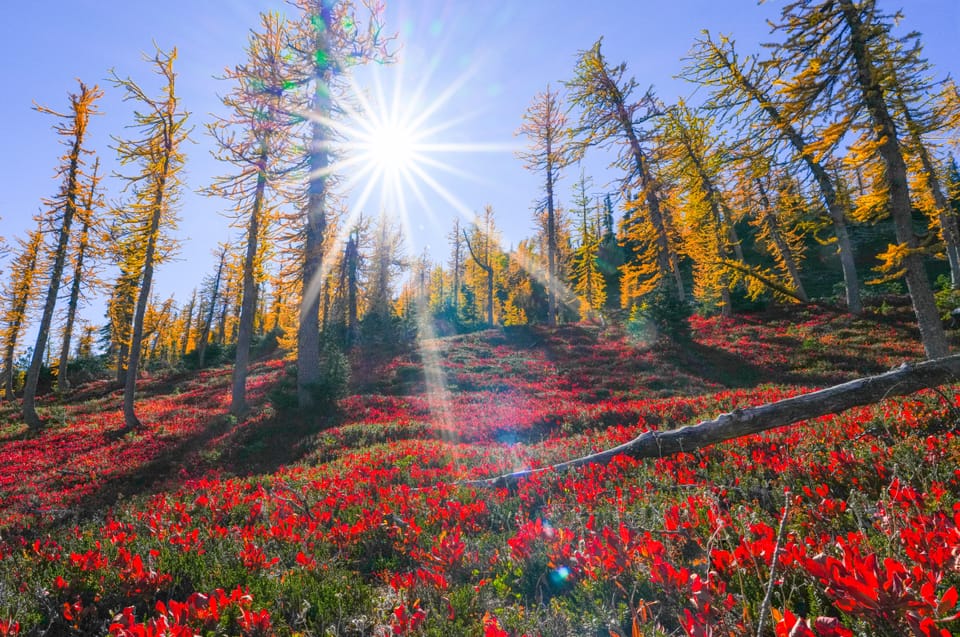
Among a green sea of conifers, one conifer reigns supreme for its flamboyant displays of autumn colors that have long puzzled scientists.
If you've ever wondered why the landscapes of western and northern North America are utterly dominated by conifers there's a good answer. Alongside other factors, the dry summers and cold winters of these landscapes greatly limit decomposition and the release of vital nutrients.
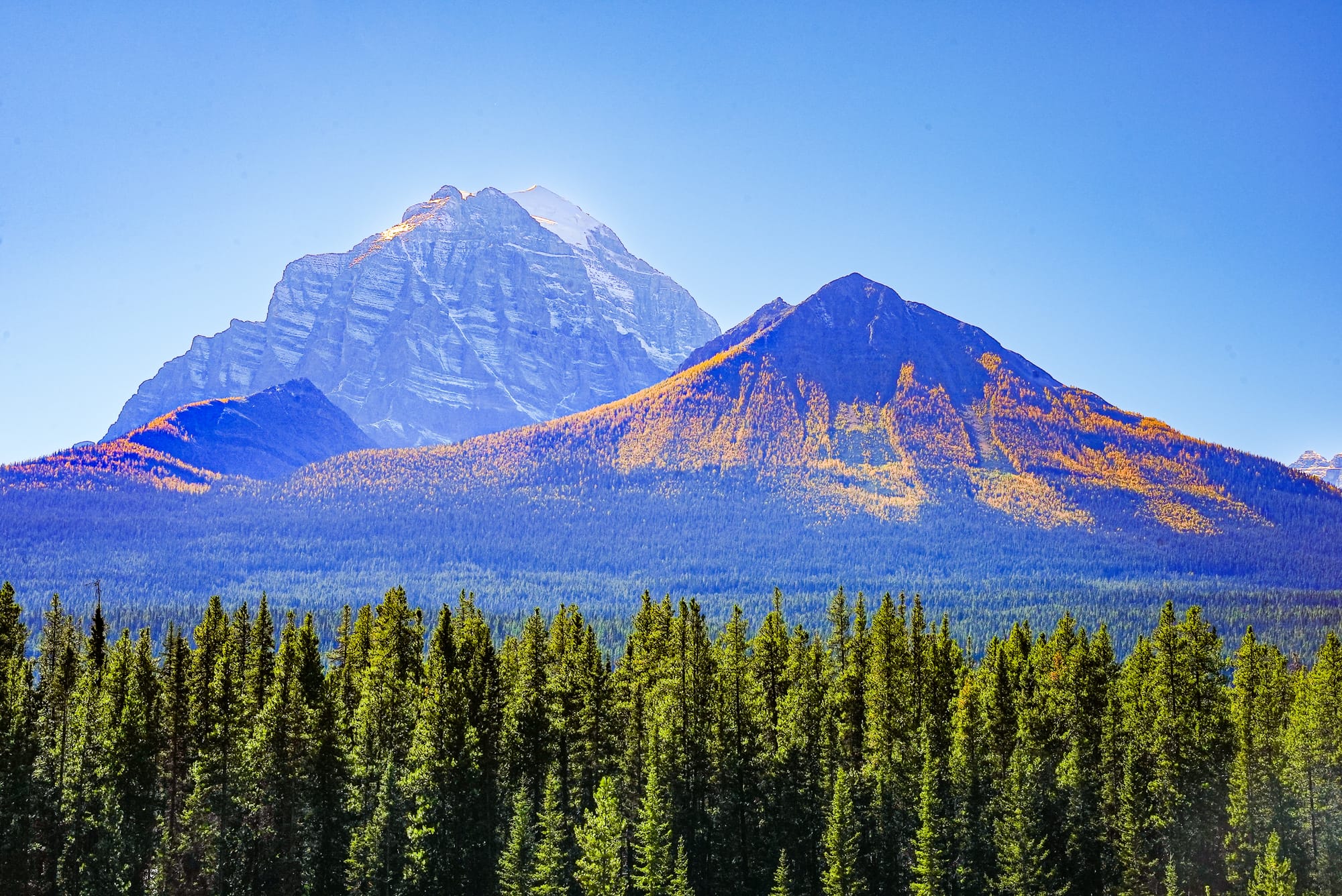
However, evergreen conifers have adapted to these conditions by holding onto their needles for many years (a single needle can remain on a tree for up to 40 years!), which means they don't require a lot of nutrients to grow new needles every year.
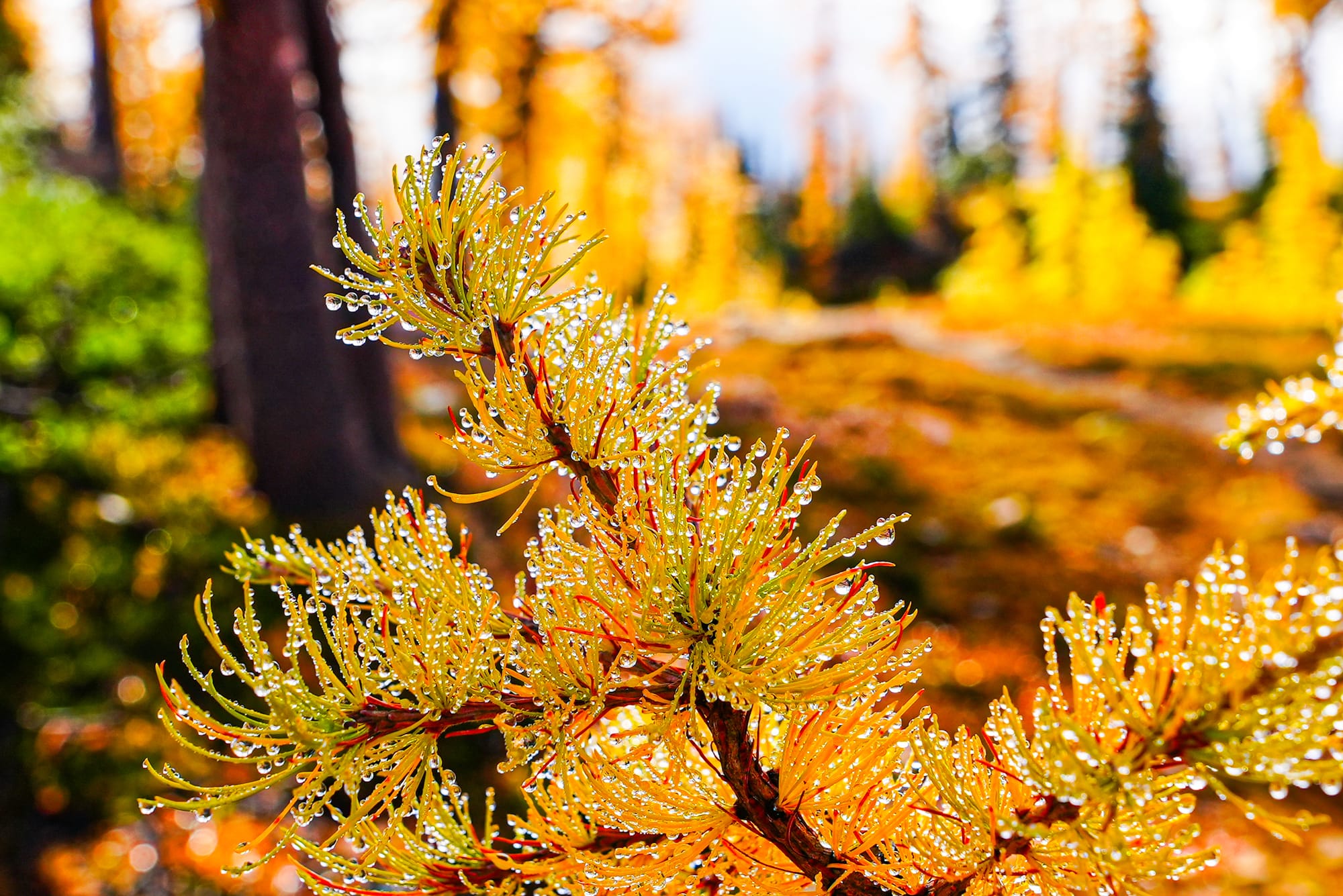
Given these constraints, it's shocking that one group of conifers has evolved to drop their needles after a display of fall colors so outrageous and flamboyant that these trees inspire "Larch Madness."
Huge numbers of people gathering to see larches on a single trail! Jade Wolff video on Instagram (@jade_wolff)
There are 10 species of larches in the Northern Hemisphere, but the species I know best are alpine (or subalpine) larches. These trees are only found on high, rocky peaks in a small pocket of the inland Pacific Northwest. Here, they grow at the highest limits of timberline, where soils are limited or virtually nonexistent, and nutrients are very hard to come by.
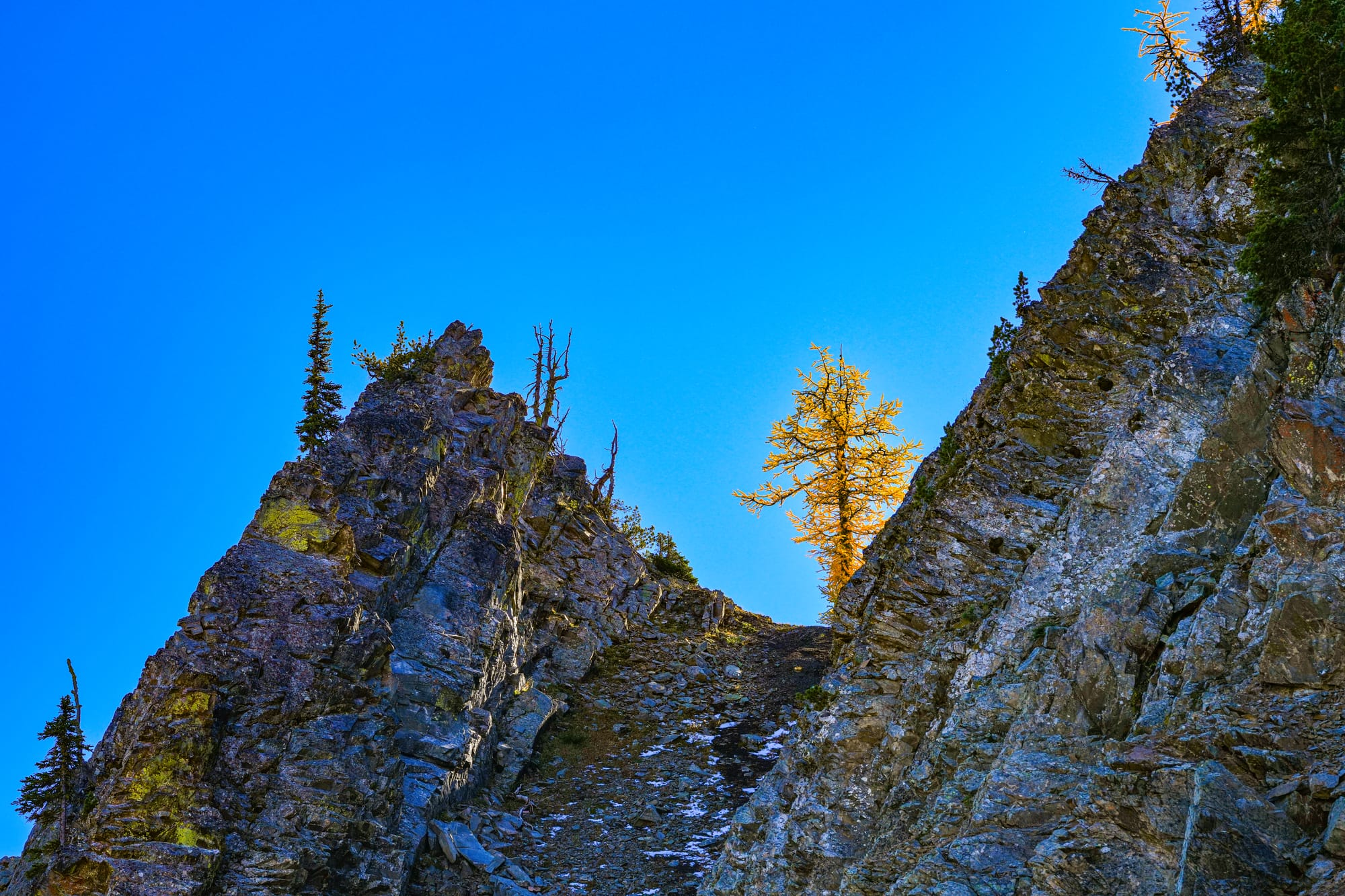
It's long been a mystery how deciduous larches survive such extreme conditions when they lose and replace their entire crop of needles in a habitat with very few nutrients. But recent studies have found that they utilize multiple adaptations that are just as good as, or better than, the survival strategies used by evergreen conifers.
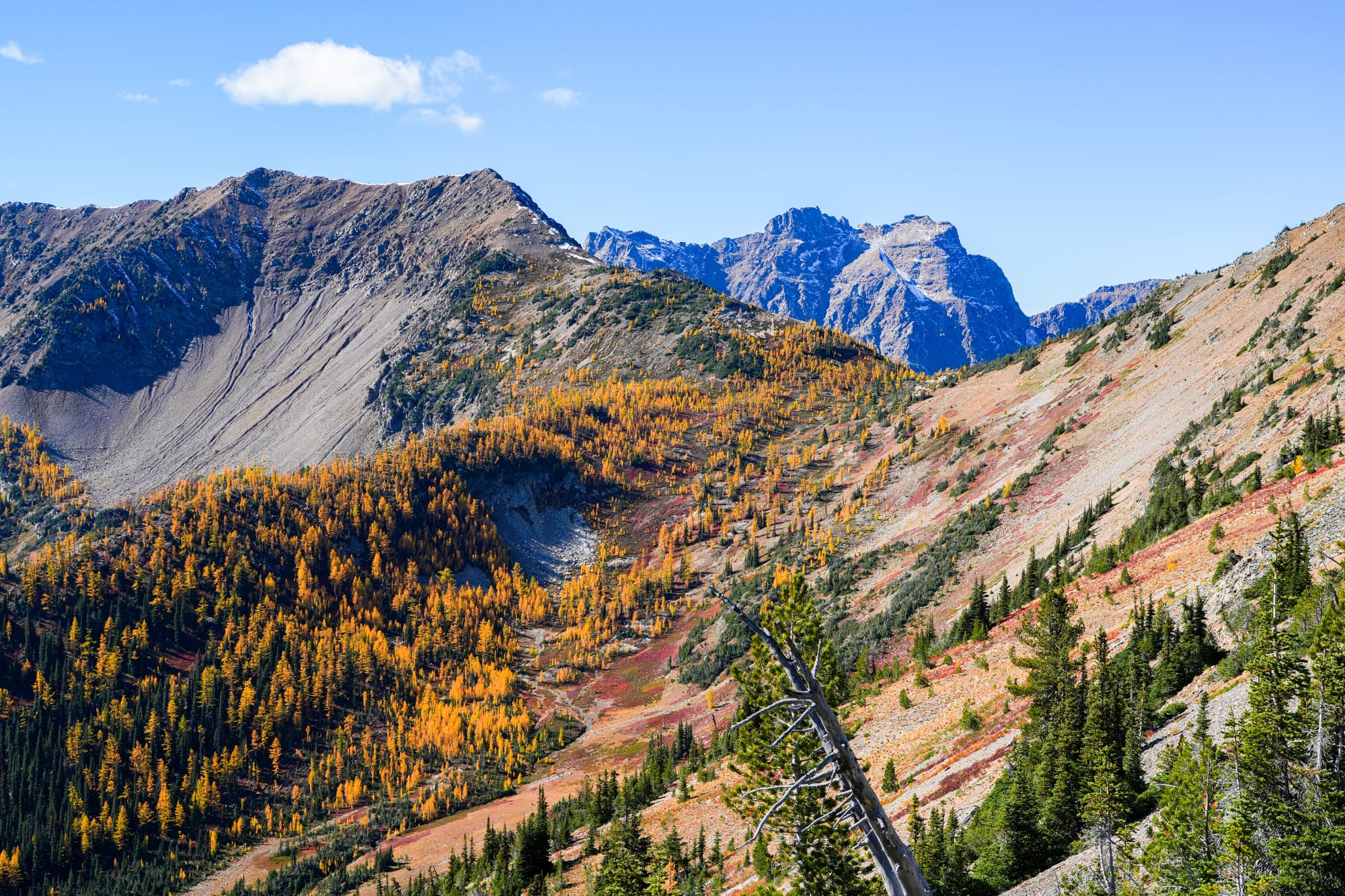
One limiting factor at these extreme elevations are the freezing temperatures and desiccation that can destroy living tissues during the winter. In fact, up to 75% of the needles on evergreen conifers growing at timberline are killed each winter, while fierce winter storms break branches and topple larger trees. However, by dropping their needles, larches not only avoid tissue damage, but also avoid damage caused by wind and heavy snows pushing against needle-covered branches.
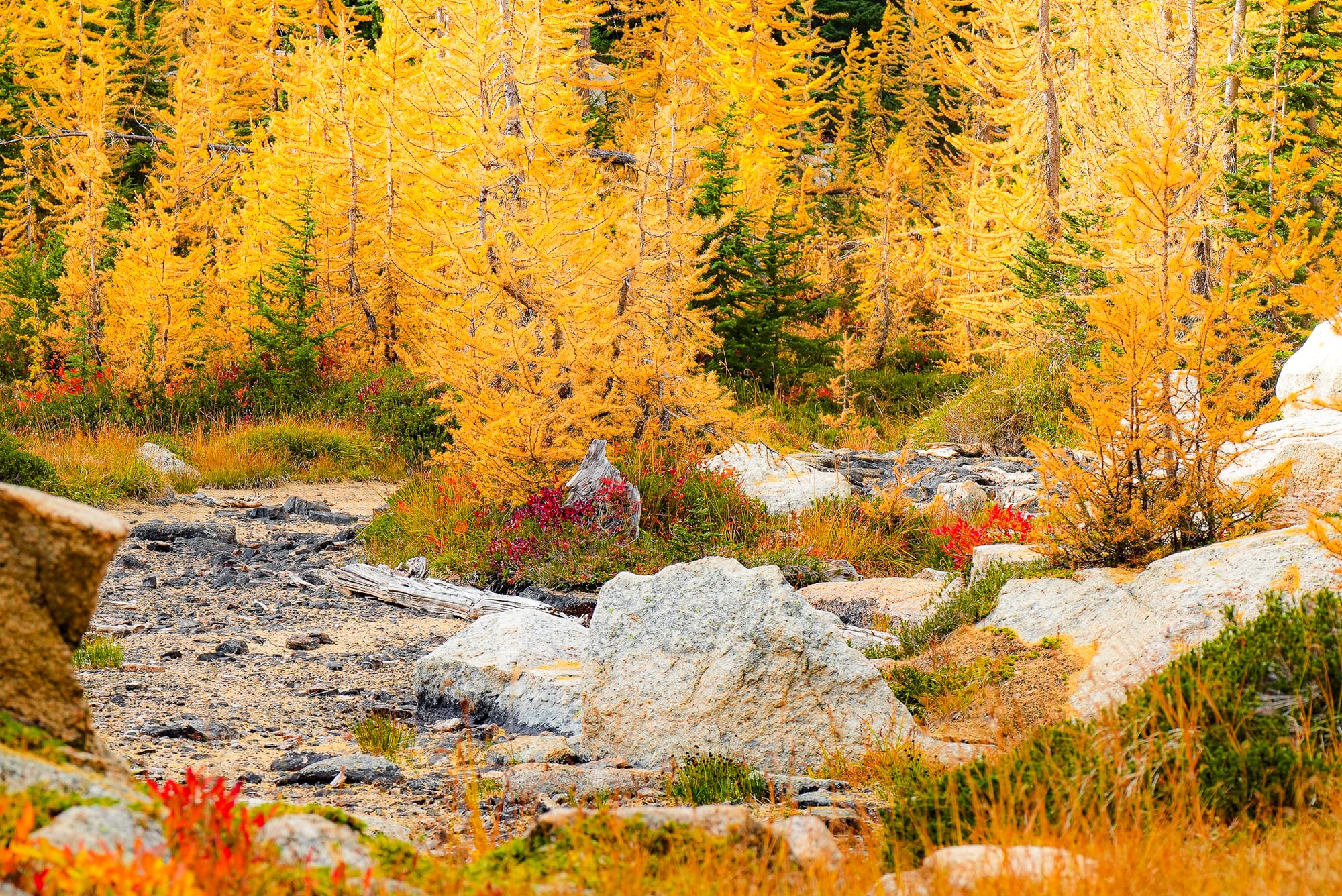
Larches in Siberia survive winter temperatures down to -85 degrees Fahrenheit!
Dropping needles to avoid winter is a brilliant solution, but it means that producing new needles each spring becomes a huge issue. Larches solve this problem with several unique adaptations. First, they are highly efficient at withdrawing and storing nitrogen in old needles before they drop them, which is critical in an environment where nitrogen is scarce. They then protect new needle buds inside small wooden pegs, which protects the embryonic tissues and allows the trees to begin leafing out even when there's still a lot of snow on the ground.
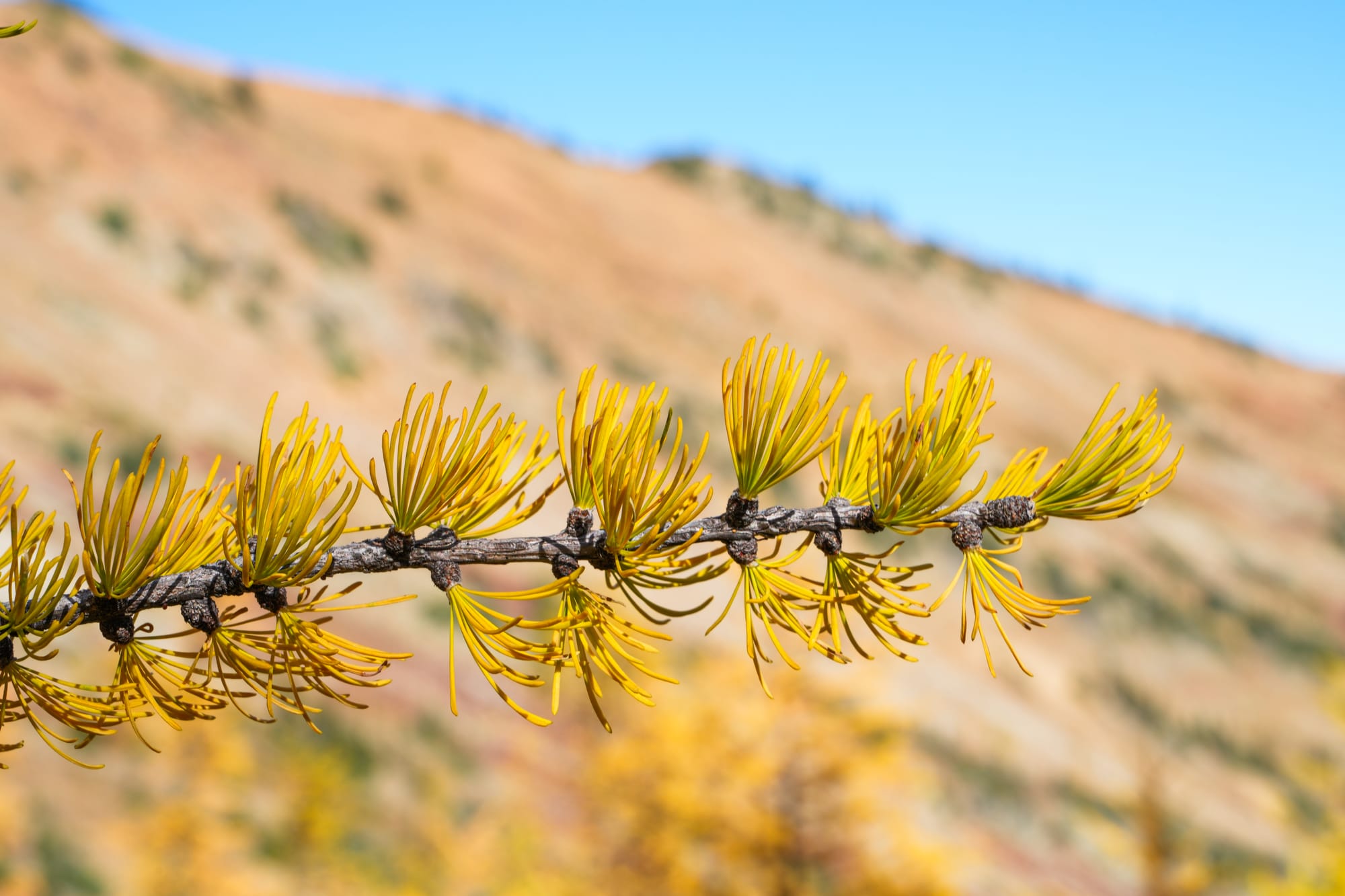
Evergreen conifers are at a disadvantage because they don't begin growing new needles until after the snow melts, which shortens their growing season and limits the elevations they can tolerate. Evergreen conifers are also at a disadvantage because they retain their needles for many years, which forces them to protect needles with special coatings, structural support, and defensive compounds that require a lot of nutrients to produce and maintain.
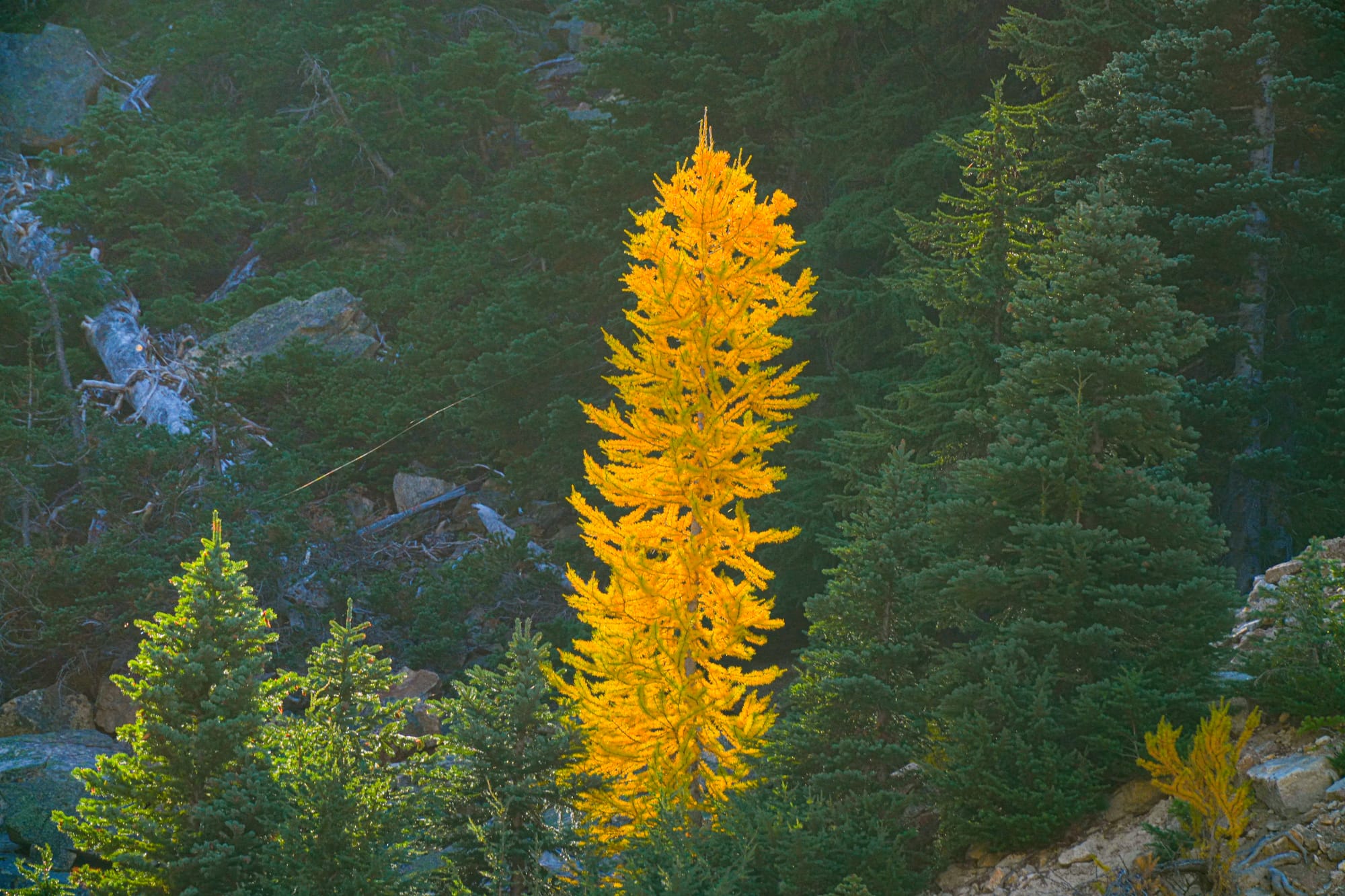
On the other hand, larches produce "cheap" disposable needles and direct their energy into maximizing photosynthetic capacity during the short season that needles are on the tree. In particular, larches grow on rocky slopes in full sunlight, where there are few competing trees, allowing them to crank up their photosynthetic rates and produce a vigorous crop of new needles.
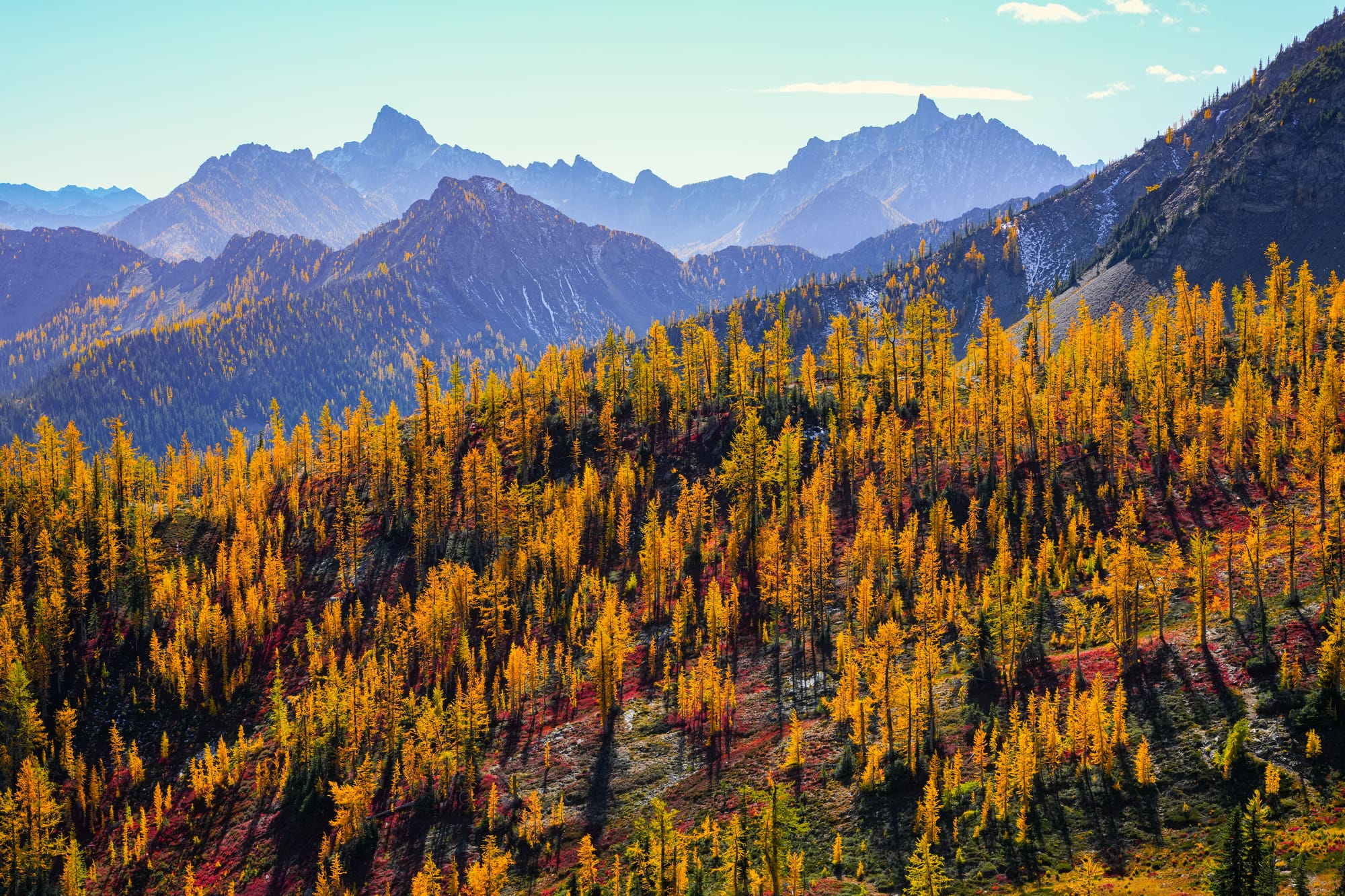
Ultimately, the key factor for every plant is its annual balance of carbons—what the plant loses versus what it produces. While evergreen conifers save carbon by keeping their needles longer, they're forced to use this carbon to protect their needles. Larches lose carbon when they drop their needles each year, but then they conserve carbon by producing cheap needles and also gain carbon with a longer growing season.
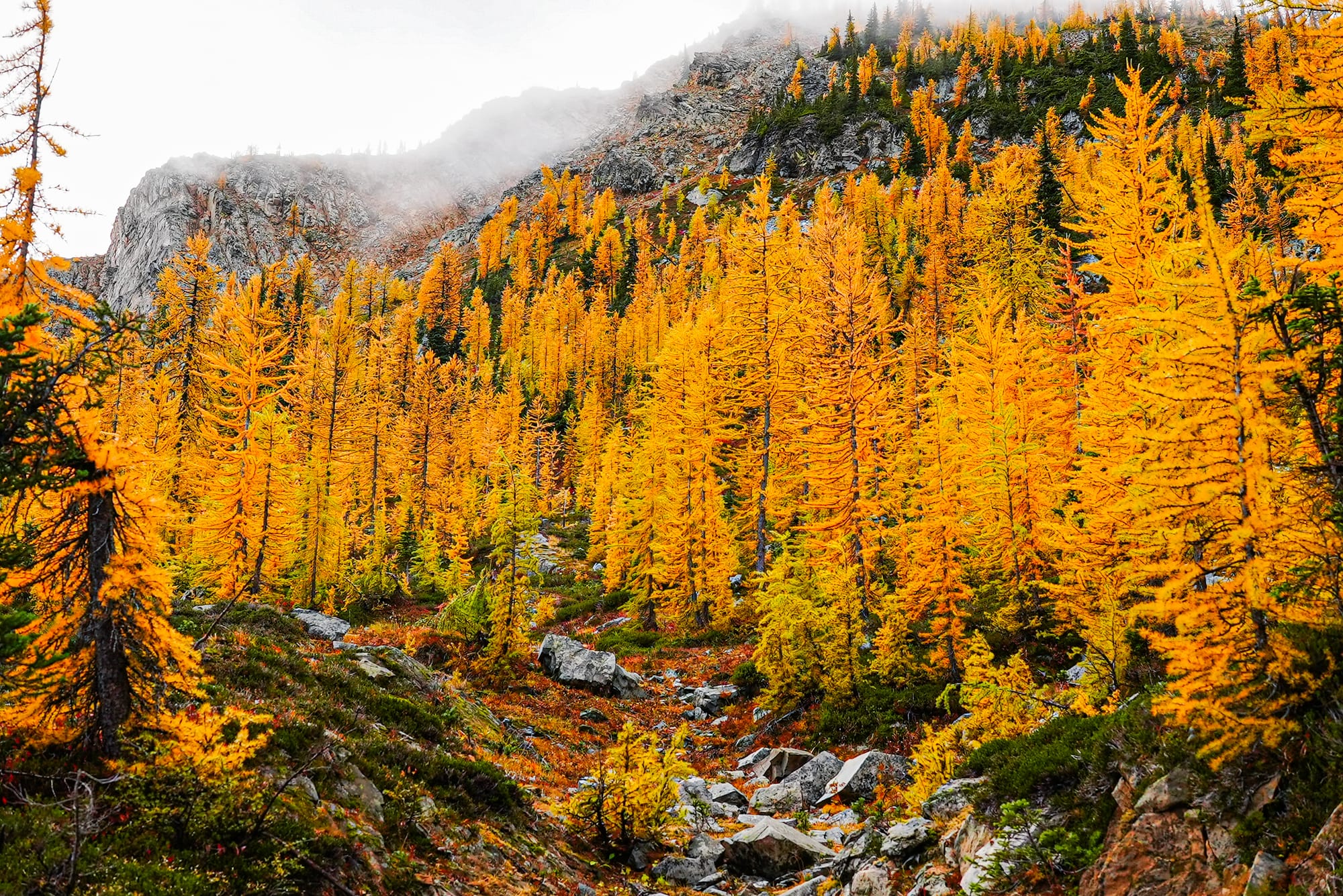
Both strategies work for different reason, with evergreen conifers thriving in dense forests below timberline...and alpine larches taking over in marginal habitats at tree line where they utterly transform the crystalline days of autumn with wild displays of color.
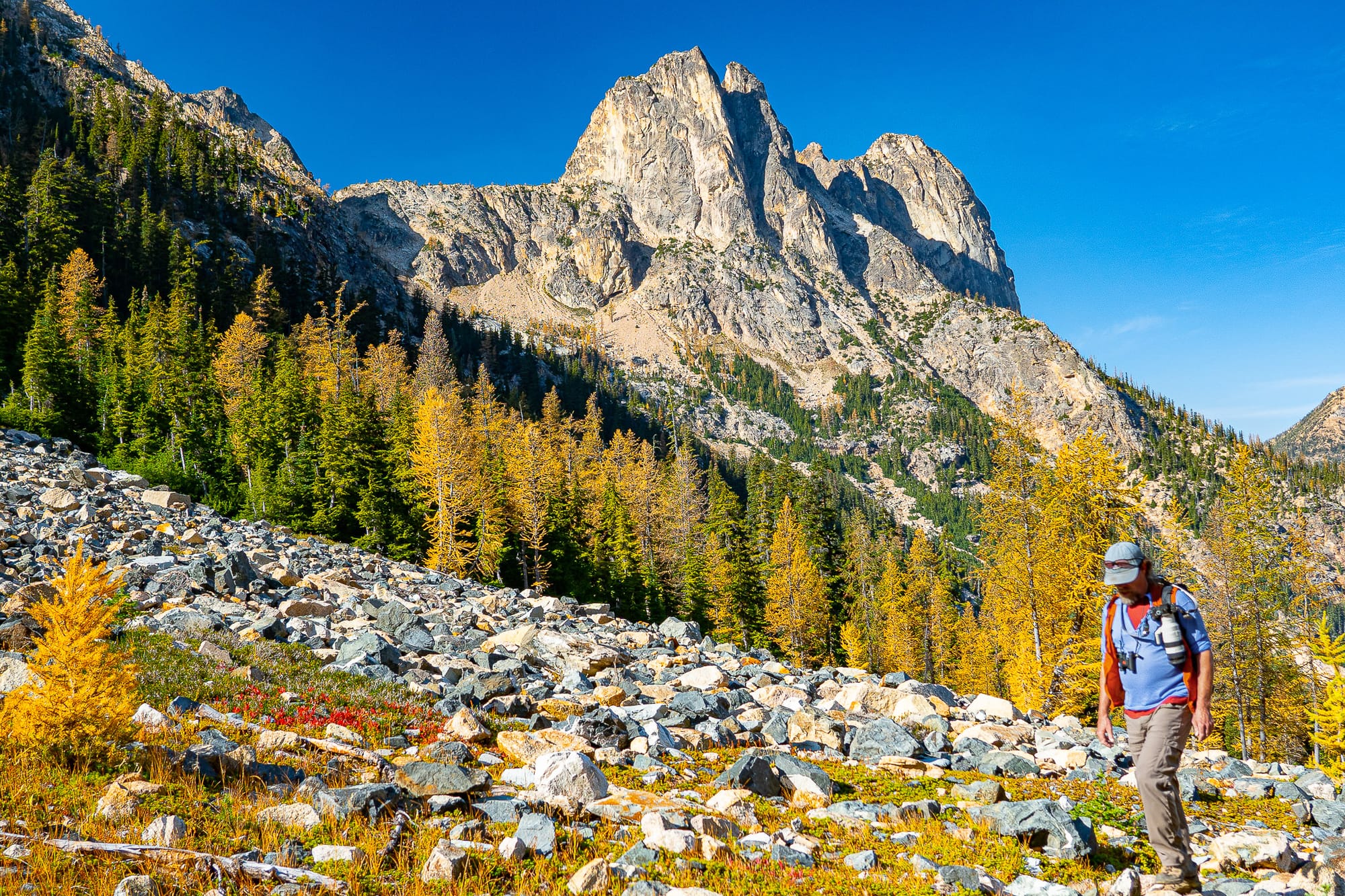

Member discussion